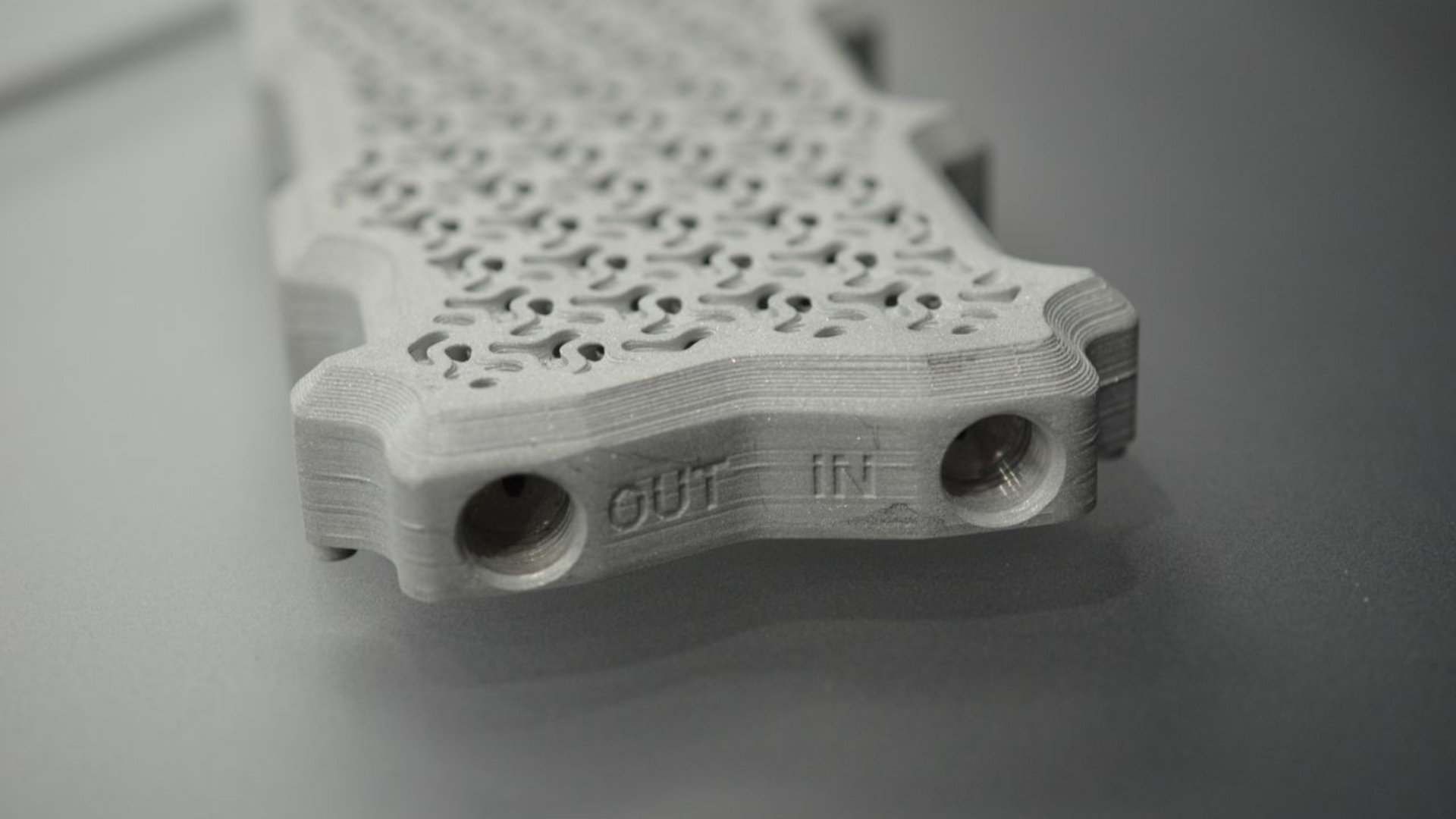For many years, CPUs and GPUs got by with just using a smidge of power. It’s a very different story these days, and the AI boom has forced processor designs to consume vast amounts of power. To help shift all this heat away, some companies are creating such complex-looking thermal solutions that they could easily pass off as works of art.
One such example is Alloy Enterprises’ liquid cold plate for Nvidia’s H100 AI superchip (via SemiAccurate), but what sets this apart from the crowd is how it’s made. Most cold plates, aka water blocks, are milled from several billets of metal that get bolted together to create a chamber. Alloy Enterprises teamed up with nTop to use the latter’s modelling software to make something so intricate that milling or casting it would be impossible.
After modelling the ideal liquid flow via nTop’s software, Alloy then created a 3D model of the whole thing. Since it can’t be manufactured as a whole unit, the software package slices it up, with each layer being laser cut out of a sheet of aluminium. These layers are then treated before being stacked on top of each other.
Then the magic of diffusion-bonding takes place, where a judicious amount of heat and pressure is applied over a long period of time, which essentially forces the thin layers to bond in such a way that, to all intents and purposes, it becomes a single block of metal.
Alloy Enterprises summarises into a suitably engineering marketing fashion: “180-micron microcapillaries that direct coolant with precision to regions of high thermal output, parallel inlet and outlet channels that minimize flow length and pressure drop, and a gyroid infill structure that increases surface area while supporting the internal volume.”
Nvidia’s H100 is a 700 W GPU, where the G stands for ‘AI training, inference, and large-scale data processing’ rather than graphics. That’s a fair amount of power, of course, though the common-or-garden RTX 5090 isn’t too far behind at 575 W. As things currently stand, GPUs are the real powerhouses of the processor world, but it won’t be long before CPUs are on par or ahead.
That’s according to another king-sized cooler company, Microloops, which gave a presentation (via X-user HXL) about how it was going to tackle the 4,000 W power consumption of future generations of server CPUs. And we’re not talking 50 years into the future or anything like that; Microloops anticipates such power levels by 2034.
AMD’s EPYC 9965, a 192-core Zen 5c processor, can use up to 500 W of power, but TechPowerUp reports that the company will be targeting double that figure for its next generation of massively-cored CPUs. Air cooling just isn’t good enough for such things, so the order books of Microloops, Alloy Enterprises, and many others are likely to be packed full thanks to AI systems builders looking to maximise the efficiency of their water-cooled thermal solutions.
However, I wouldn’t be surprised if we start to see similar projects kicking off for gaming PCs. I don’t mean OEM builds; it will be the ultra-enthusiasts and overclockers who are happy to BIOS mod their RTX 5090s to use 750 W or higher. But eventually, what’s successful at the niche end of things often finds a way to trickle down to the general consumer.
Vapour chambers, water-cooling, and even RGB lighting were all once the preserve of the few, but now anyone can spend a bit of cash and throw it into their humble glass-panelled boxes. So who knows, by 2034, we could all have a diffusion-bonding cold plate on our CPUs, and we’ll still be here, arguing over who makes the best gyroid infill structures.

Best CPU coolers 2025



